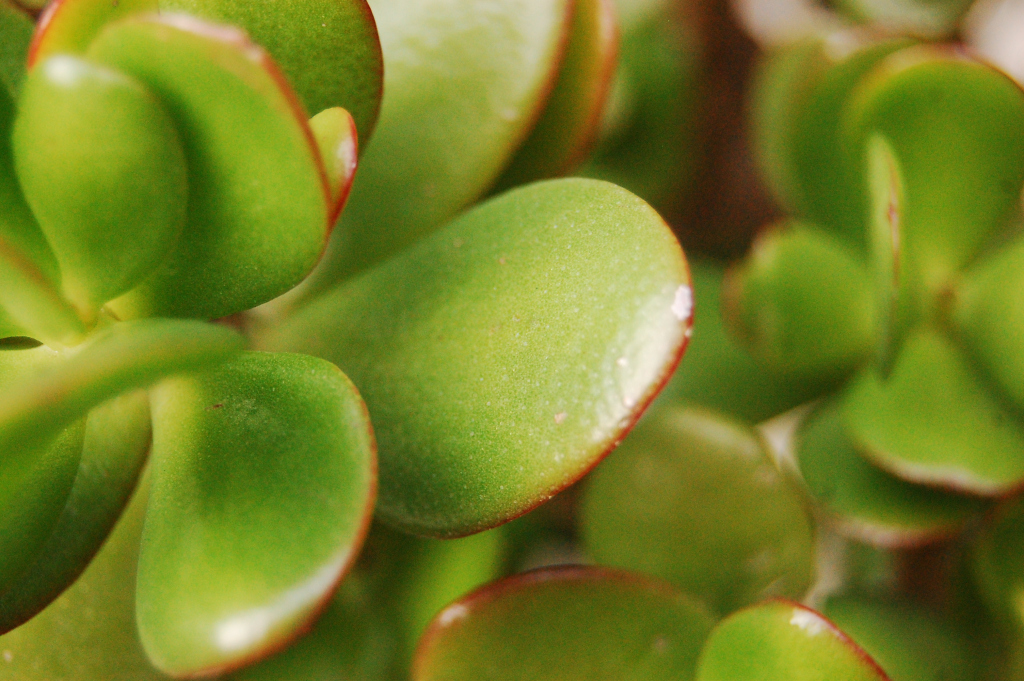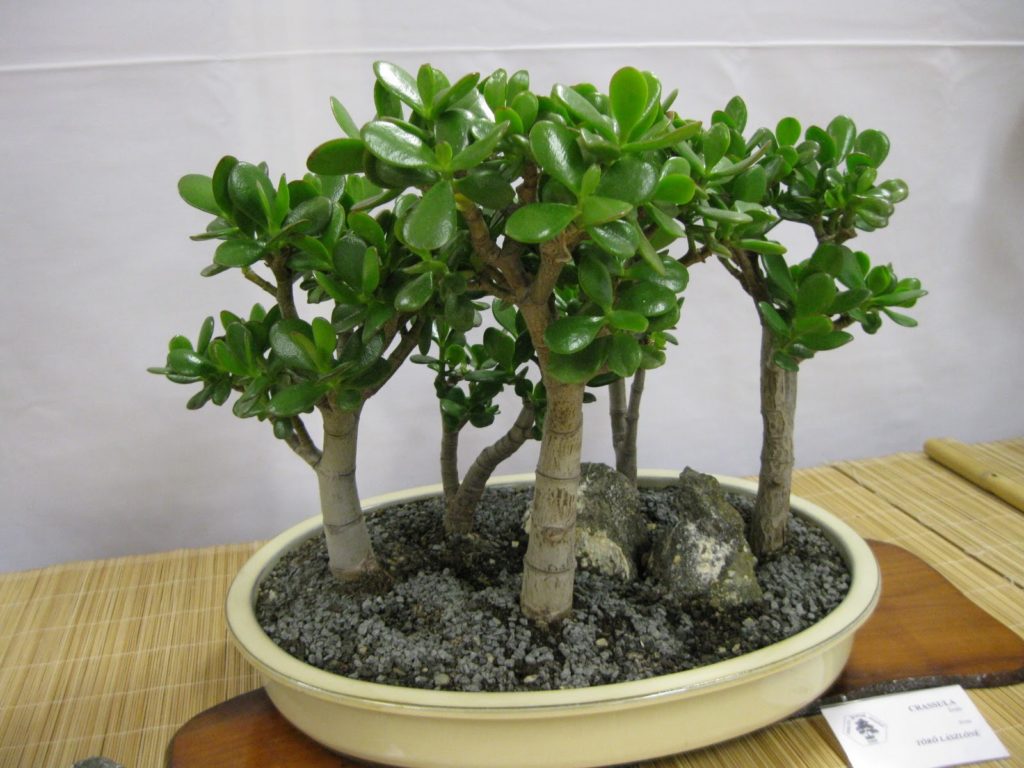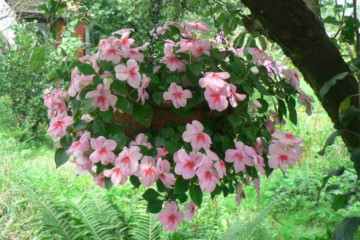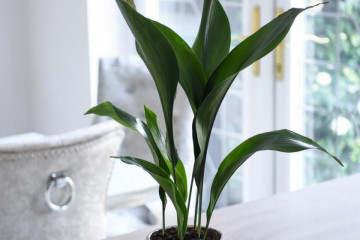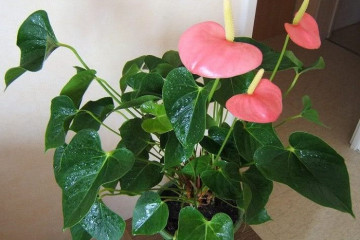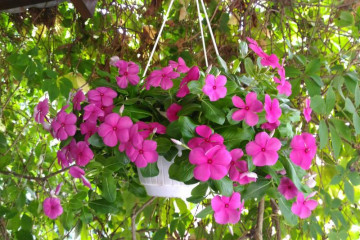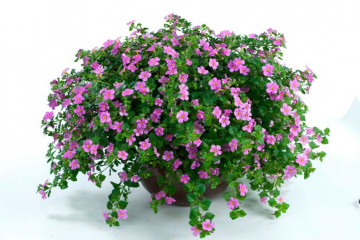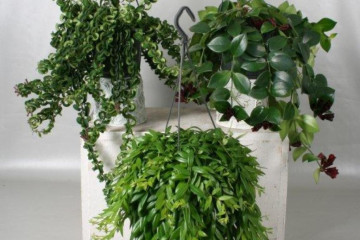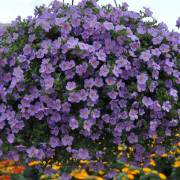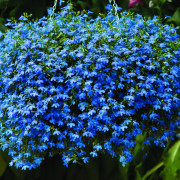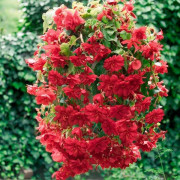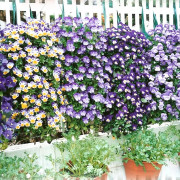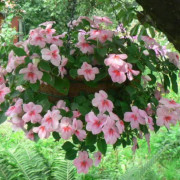Crassula ovata - what kind of flower
Content:
The plant, best known as the "money tree", also has a scientific name - Crassula Ovata. In indoor floriculture, it is considered one of the most popular, because its beautiful appearance is preserved with a minimum of maintenance.
Crassula ovata - what it looks like
Crassula ovoid, as it is also called, belongs to the Crassulaceae family. The herbaceous succulent is native to South Africa, where it is found in arid rocky areas. Today it is a very famous garden and indoor plant that can decorate any home.
In its natural environment, the succulent crassula can grow up to 180 cm in height. As it ages, the stems of this shrub become woody and brown.
Numerous leaves are ovoid, thick and succulent, never cut, colored in different shades of green, with a reddish border.
Popular varieties of Crassula Ovata in indoor floriculture:
- Crassula Lactea is a creeping (ampelous) shrub with shoots up to 60 cm long. The stems are brownish in color, and the leaves are light green with white dots along the edges, which are salt crystals;
- Variegated - Crassula with light green leaves covered with chaotic spots and stripes of a lighter or darker color. The border around the edge of the foliage can be red or yellow;
- Treelike (lat.Crassula Arborescens) - its green leaves (up to 5 cm wide and up to 7 cm long) of almost regular rounded shape with a bluish tint and a reddish underside. Needs very bright light and extremely poor watering;
- Crassula Horntree (Horn Tree) is an oval variety, in which young shoots are pink, and then turn brown. The leaf is at first oval, and then grows together in half, turning into a tube. The tips of the leaves may be red;
- Tricolor - Crassula, in which a light green leaf is covered with white stripes, and a red border is located along the edge;
- Mix is a small-leaved variety of succulent (leaf up to 4 cm long and up to 2 cm wide), easily forms a tree when properly pinched;
- The hobbit is a compact species up to 60 cm tall with leaves of a funnel-shaped elongated shape. In bright light, the crown turns yellow and a reddish border appears along the edge of the leaves;
- Minor is the smallest variety, the leaf width is up to 1 cm, and the length is up to 1.5 cm. A dark green leaf acquires a reddish narrow border in bright light;
- Scaly - on its straight stems in 4 rows there are scaly triangular-oval leaves of green or yellowish color, sometimes with a reddish border. Erect shoots up to 25 cm long lodge over time and easily root themselves;
- Convoluta - differs in a darker color of the leaves, which gradually grow together, rolling up into tubes. In bright light, the edges of the leaves are painted in a burgundy hue.
Briefly about the history of appearance
In Europe, the succulent appeared at a time when the colonization of South Africa was taking place (Zimbabwe, Madagascar, Mozambique). From there, trees with thick leaves like coins were brought.
Since they practically did not need care, and rumor cemented the glory of the "tree of luck" for the plant, its popularity only grew every year.
Home care for Crassula Ovata
Along with Chlorophytum and Zamioculcas, Crassula is an ideal office plant. You can forget about her for weeks and not be afraid of her death. Very rare watering - that's all she needs except heat and light.
- Illumination and temperature conditions
Without exception, all varieties of the money tree need bright lighting. With a lack of sun, the shoots stretch out and droop.
The optimum temperature for keeping is room temperature within +15 .. + 35 ° С.
- Watering rules and humidity
Water the plant only after the soil in the pot is completely dry. In summer - no more than 1 time in 7-10 days, and in the cold season - 1 time in 4 weeks.
Spraying is absolutely contraindicated, but from time to time the bush can be washed with a warm shower to remove dust.
- Top dressing and soil quality
During the season, it is allowed to apply fertilizer intended for succulents 1-2 times. The abundance of nutrients in the soil is destructive for fat women.
Prepare the soil for planting yourself. To do this, sand, broken small expanded clay, vermiculite, charcoal are added to the universal mixture. The result should be a very loose, neutral mixture that perfectly permeates water and air.
Features of plant transplant
Young plants need to be transplanted annually. After 5-6 years, they are transplanted much less often - every 2-3 years. The soil is replaced completely, shaking it off the roots.
The pot is taken wide and low, since the root system is superficial. A container is selected according to the size of the root system, giving preference to heavy ceramic pots, since it is more difficult to accidentally overturn them.
How and when a houseplant blooms, a dormant period
Flowering may occur in November, winter or March, depending on the variety. It is one-time, after the withering of the inflorescences the next time the fat woman will bloom only after a year.
In autumn or winter, the oval crassula expels umbellate peduncles, consisting of 5-petal, star-like corollas of white or pink color. When pollinated, seeds are formed.
Reproduction of the oval fat woman
Like other representatives of the vast Tolstoyankovye family, Crassula Ovata reproduces by leaves, shoots, seeds, and dividing the bush.
Leaf and stem cuttings
Any part of the plant is a potential cutting. The step-by-step process of grafting looks like this:
- A leaf or twig is easy to break off.
- Then you need to put it to dry for a day or two.
- After that, the cutting is immersed in the soil with its end and left to take root. It takes several months, but you don't need to take care of it in a special way. Watering the cuttings is very rare, when the soil is completely dry, otherwise rot will appear.
Possible problems in growing Ovata
The main problem that flower growers face is the death of a fat woman due to the bay. In 9 cases out of 10, the plant dies, being too abundantly watered. Like all succulents, the money tree will survive a prolonged drought relatively painlessly, but the bay of roots almost always leads to rapid death.
Are there diseases and pests
Fat women almost never suffer from diseases. But when dark, weeping, putrid spots appear, the sore spot is cut out, sprinkled with crushed coal, and the plant is sprayed with a fungicide solution.
Of the indoor pests, the most dangerous are scale insects and spider mites. They are treated with specialized acaricides against them.
Crassula Ovata has become a real favorite for thousands of flower growers around the world. She does not care about drought, the heat is only good, and it should be watered as little as possible. It grows very slowly, but every year it only gets prettier.
